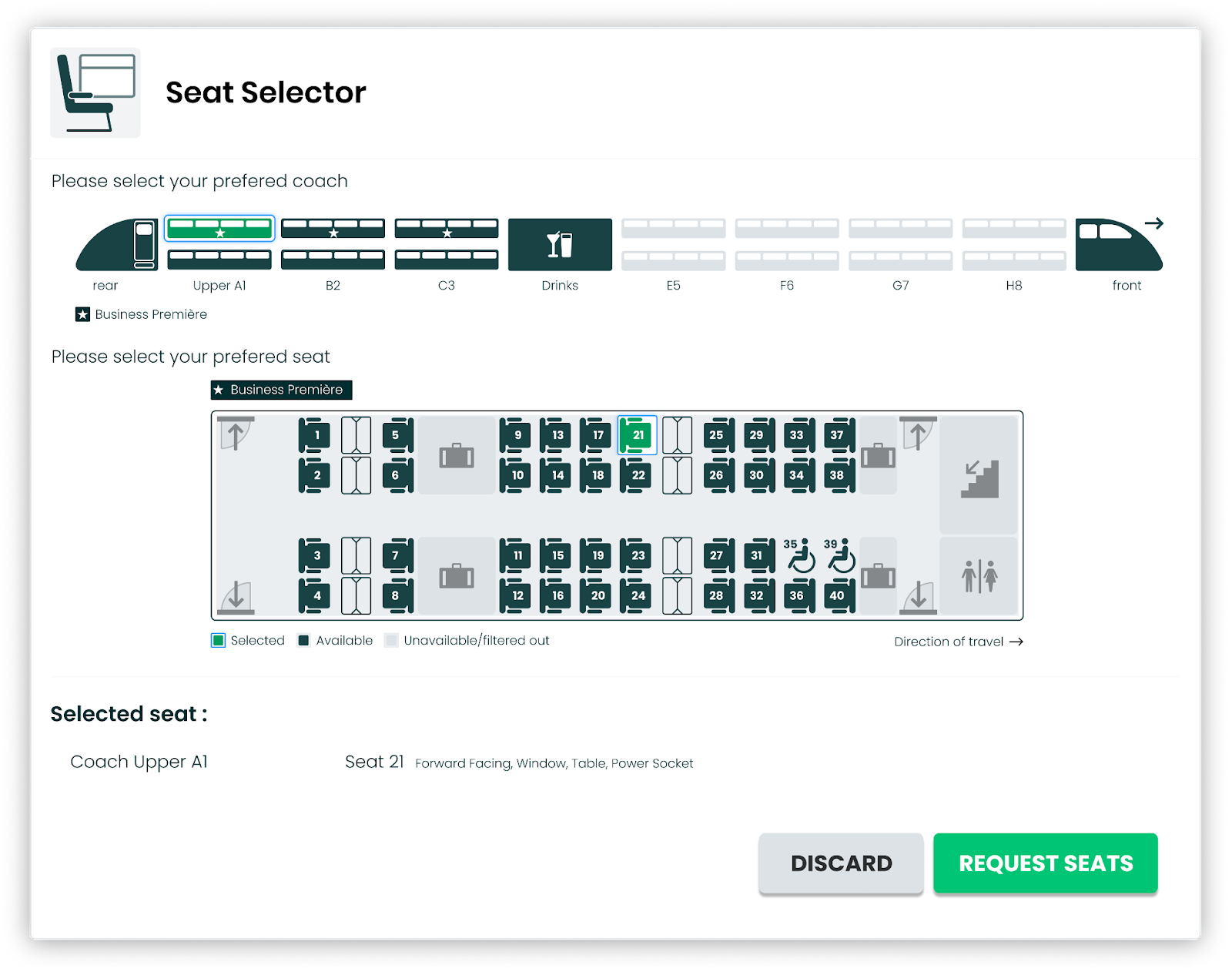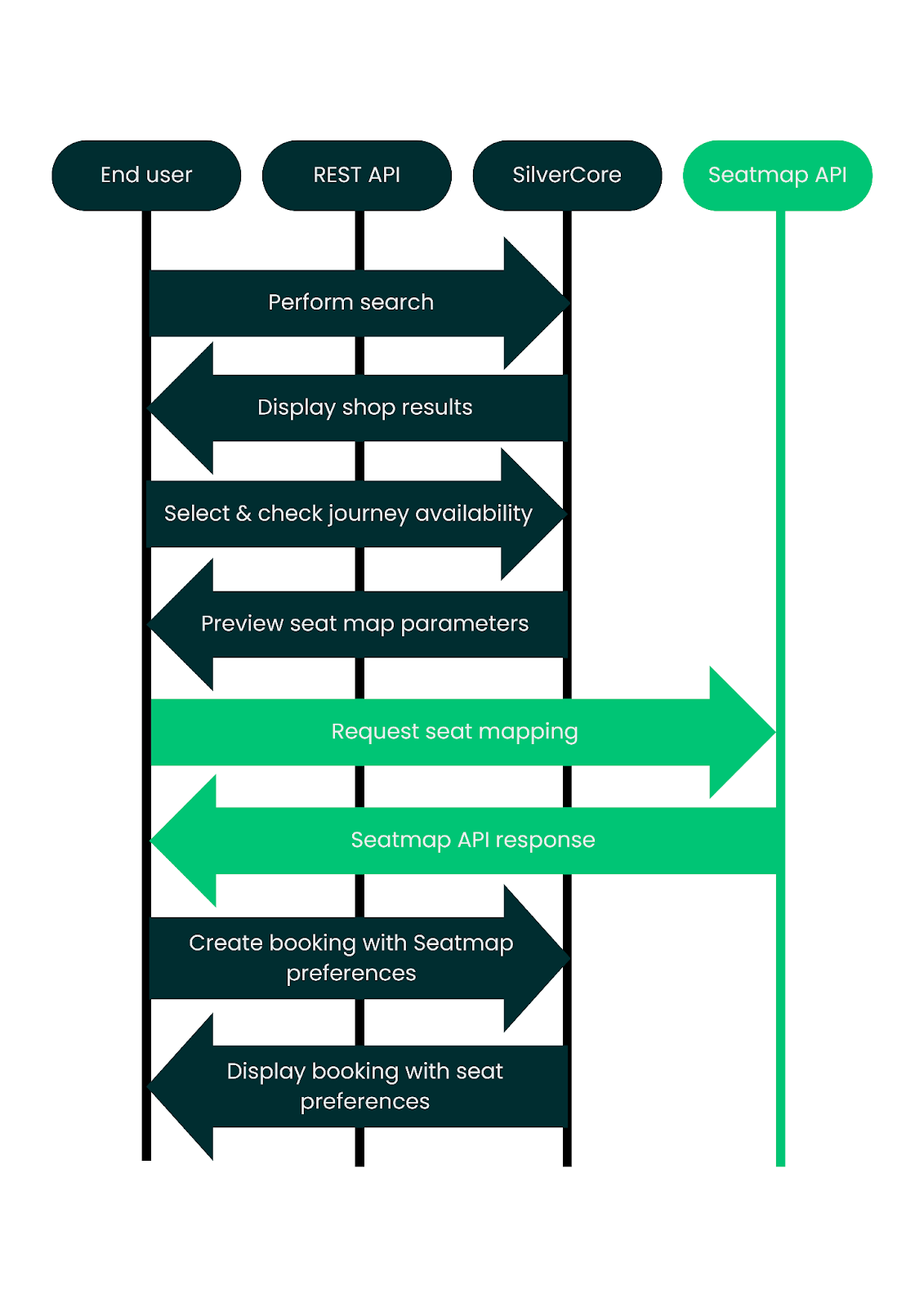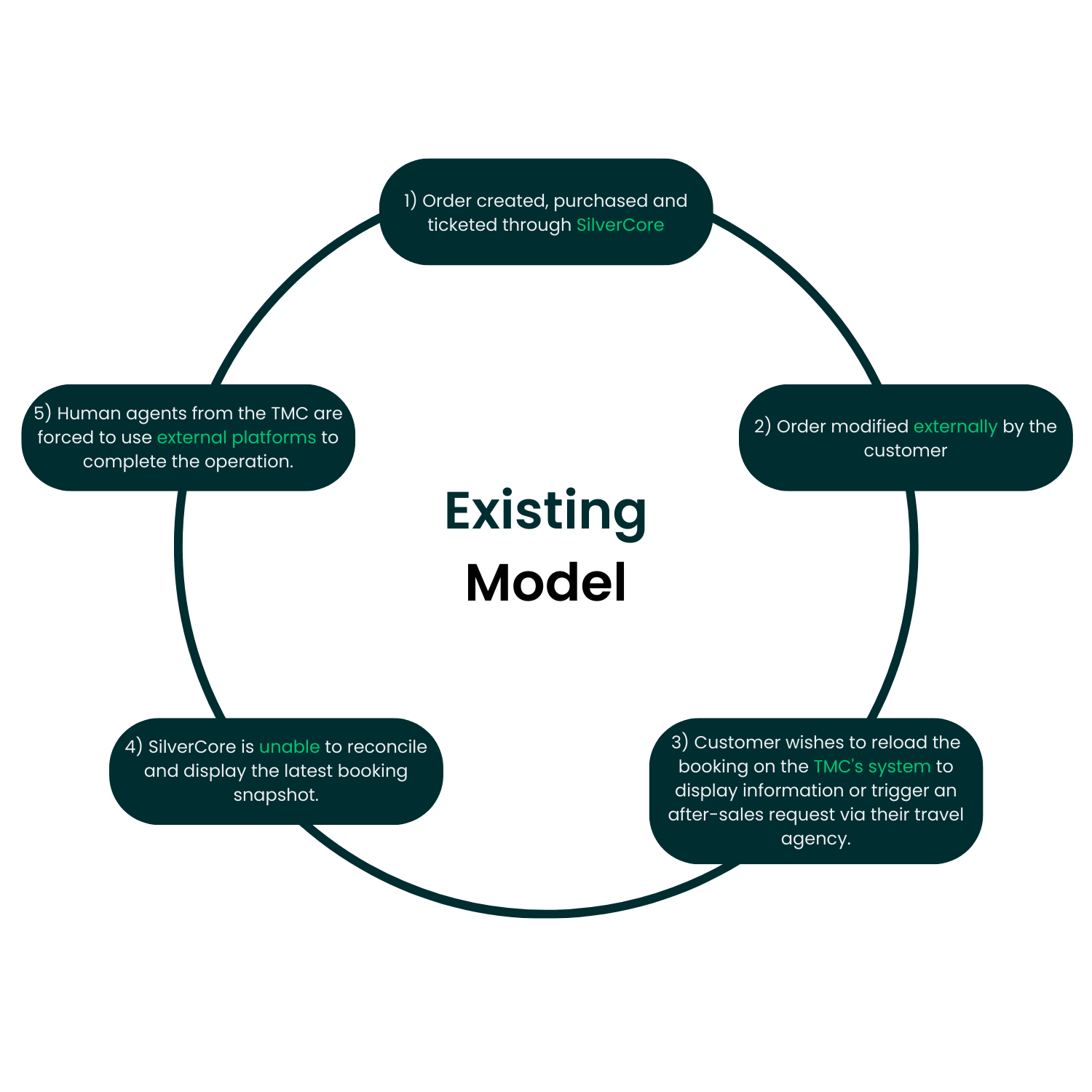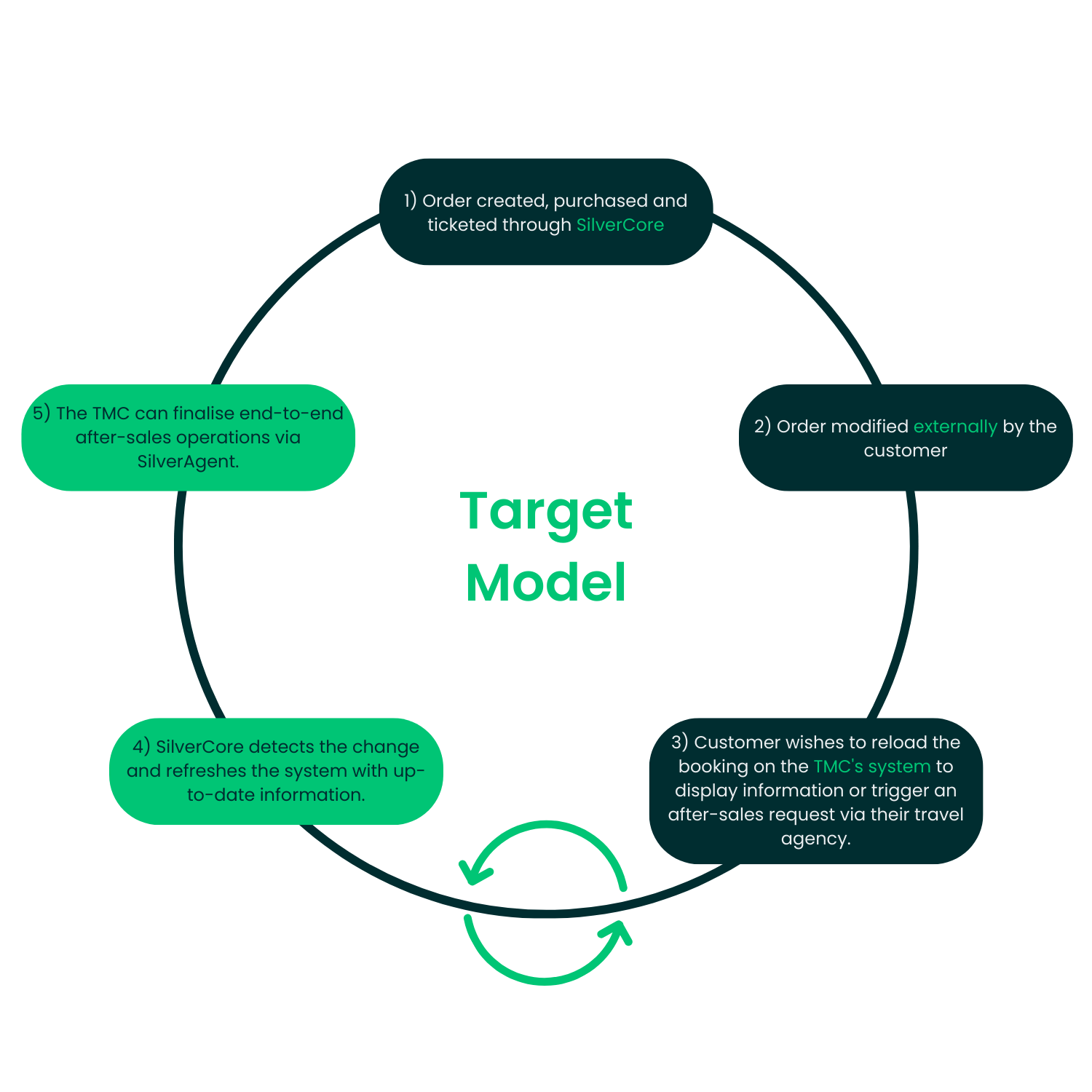Product Innovations for the French Rail Market
14/09/2022
Written by Romain Ventanas
As I approach my twelfth year in the French rail sector, I thought now would be a good time to reflect on some of the projects I’ve been working on as part of SilverRail’s mission to change the way people move and decarbonise the future of transport.
France is one of the world’s biggest markets for leisure rail. The country carries a rich heritage as a rail pioneer — playing a major role in the evolution of the industry over the last century. From its first railway that ran just 11 miles between Saint Etienne and Andrézieux in 1828 to 200mph TGV rocket ships that shook the world in 1981, France’s innovative take on rail continues to make my job exciting.
After eight years at France’s national state-owned railway company, SNCF, transitioning into a Senior Product Manager role at SilverRail has given me the freedom to deliver customer-centric solutions to age-old problems.
Specifically, I’m delighted to be working on two important features in SilverRail’s product suite that focus on making rail easy for agencies and operators by increasing conversion and making rail more profitable by improving operational efficiencies. In short, our Seatmap product makes it easier for travellers to buy rail and our Offline Sync innovation helps agencies sell rail content more efficiently.
So, without further ado, let’s take a look at how these products are helping to change the way people move and what it’s like to build products at a company that is shaping the future of travel.
Product Challenge #1: Improving Booking UI in French Rail
One of SilverRail’s key missions is to increase the number of people taking trains by improving user interfaces and optimising online conversions.
The rail market can’t afford a leaky bucket. In an age of hyper convenience, the success of French rail hinges on the industry’s ability to deliver seamless customer experiences that A) encourage more people to consider taking the train and B) maximise the proportion of these people who book a ticket.
To make rail easy, we need the traveller experience to be on par with the air travel industry. We talk a lot about the green benefits of choosing rail, but it’s also important to look at things from an e-commerce perspective — we need to offer user interfaces that deliver unrivalled rail experiences where travellers feel empowered and valued.
In light of this, we were looking for ways to minimise pain points during the booking process that would give travellers more control and choice — two things that fuel customer delight. People love to feel like they have control over their decisions.
Similarly to SilverRail’s pioneering calendar search product, our SilverSeatmap represents our ongoing commitment to delivering incredible user interfaces that match or even exceed air travel experiences.
From a commercial perspective, we also wanted to develop a product for Travel Management Companies (TMCs) that was in high demand and was already in use by a handful of rail carriers. Why? Because if travellers deem carriers to have superior functionality, they will book directly with a carrier instead of going through a TMC. In this scenario, the TMC loses out on bookings and their clients would incur the costs of manually processing expense receipts.
Working with Juliette Thorpe, our Senior Commercial Director, we realised that achieving this parity between TMC products and the customer experiences offered by rail carriers is critical for agencies to succeed with their rail proposition.
So, what did we come up with?
Introducing SilverSeatmap
SilverSeatmap is a digital product for rail carriers and online travel agencies who need to display accurate and comprehensive train seat maps to customers.
Aida Marquez, one of my fellow product managers and a team of developers in our Brisbane office made sure to build it as an API but also a widget that is easily embedded into all web browsers (on both desktop and mobile) to display diagrams of seat layouts along with other train carriage attributes to improve the booking and check-in experience for rail travellers.
The goal here was to build a seat map solution that is similar to what travellers have come to expect when booking flights. If more people are to choose green rail alternatives over planes and gas-guzzling cars, I see it as our duty to deliver experiences that make that transition as easy as possible.
As well as the ability to embed SilverSeatmap into any website, it’s also fully customisable and can combine seat map data from multiple rail markets to provide travel agency partners with seamless API integrations.
How Does SilverSeatmap Work?
The SilverSeatmap service provides a REST API called Seatmap API to retrieve details of carriages, seat availability, and orientation. The API also captures ancillary information such as the seat map data for specific rail carriers to display tailored information for different carriage configurations.
Our partners can then aggregate all of this data using our well-documented API to provide a visual representation that customers love. To aid this process, we offer a JSON response for all rail markets that support the Seatmap API. Carriers can then use this response to design ‘brand safe’ seat maps to match the look and feel of their websites and mobile apps.
To give an example, the below mock-up is from SilverAgent — our sales agent tool that can be paired with our white labelled booking tool to help agents book, modify and cancel tickets.

Product Development Challenges for SilverSeatmap
The Seatmap API request requires several mandatory inputs including an origin, destination, date/time, train number, number of passengers, one or more fare types, and optional inputs such as a train operator code.
As you can imagine, developing an end-to-end solution that could handle all of these variables wasn’t without its difficulties.
However, designing and developing alongside carriers to overcome practical use cases made this development process particularly interesting. We had to work closely with carriers to understand their needs which is why it was so important to have a local presence in the French market — having that direct contact with SNCF and several TMCs meant we could move forward with confidence.
Something that stood out for me with the SilverSeatmap development was the collaborative ethos shared across SilverRail’s global team.
While many global companies work in silos (i.e. the French team focus on France and the UK team focus on the UK), this product involved constant back and forth between our product and engineering teams in France, Brisbane, Stockholm, London and Boston. This collaborative approach meant I was always working with a diverse group of domain experts who could offer fresh perspectives, tackle complex technical problems, and serve as a vital sounding board for validating new ideas.
Consolidating local knowledge and domain expertise across multiple teams and geographies is something that makes SilverRail special. Instead of developing products that solve a specific need in a particular market, we pride ourselves on building adaptive products that are versatile and can wrap around the needs of local markets.
Whether it’s deploying SilverSeatmap outside of France or working with a carrier to optimise the system to account for new fare structures (e.g. Standard Class, First Class, Quiet Coach, etc.), we embrace a flexible approach that is geared up for scalability.
To get a feel for what we were working with and the complexity of integrating the API on top of our existing SilverCore booking flow, here’s how SilverSeatmap looks in wireframe form:

Product Challenge #2: Streamlining Backend Processes for French Rail
Another one of SilverRail’s product missions is to make it more profitable for agencies to sell rail by streamlining complex backend processes.
As the chain of stakeholders associated with French rail ticketing becomes increasingly complex, the need for multiple agents to work in harmony and to have visibility about a traveller’s status along that chain is more important than ever.
Specifically, a number of our large TMC clients had challenged us to enhance their after-sales experience by developing a product that would provide them with better visibility from a security perspective.
Whether it’s dealing with nationwide disruptions at the height of the pandemic, adapting to strike action or ensuring the safety of both passengers and employees, knowing where people are at any particular time is in the interest of all involved (this is called Duty of Care in the corporate travel industry). If the rail sector relies on a chain of disjointed systems that don’t speak to each other, this visibility becomes increasingly blurry and mistakes can happen.
From SilverRail’s perspective, every time we retrieve a booking, we need to be sure that we are looking at the latest information about things like train status, seat availability, and refund eligibility.
Our TMC clients were reporting that certain actions were being completed directly by users and not via the travel agencies who processed their initial booking. After conducting some user research, we found that speed and cost were the two main factors influencing customer behaviour:
- Speed. Travellers worked out that they could alter their bookings themselves instead of going through a third party. For example, the TGV Mobile App allows travellers to exchange tickets directly while they’re on the move.
- Cost. Despite booking alterations only accounting for a very small percentage of total sales, if TMCs rely on labour-intensive processes, they face high operational costs Unless TMCs can adopt automated processes that cut out operational inefficiencies, costs soar, which is an industry-wide issue for TMCs that we see time and time again.
So, what did we come up with?
Introducing Offline Sync
Offline Sync provides travel agencies with peace of mind as it ensures all actions that happen outside of the original point of sale are recorded, synchronised and retrievable.
Following an exploratory phase where we worked directly with clients to understand the task at hand, we landed on developing a product that could compare a booking status to the initial booking request, detect any changes, and reflect any discrepancies within the SilverCore API.
Specifically, we were looking to address three main use cases: external exchanges, external cancellations, and external exchanges with Remise à Disposition (RAD) where a ticket holder requires a refund and that seat is freed up and given back to the carrier.
Without a product like Offline Sync, TMCs would need to play with multiple systems to unblock customers and manage booking alterations. We developed Offline Sync to remove this complexity and fix issues ‘on the fly’ — providing a fast, efficient, low-cost, and reliable end-to-end traveller experience.
How Does Offline Sync Work?
One of the best things about working as a Senior Product Manager at SilverRail is the freedom to experiment with different ways of solving difficult challenges. The complexity of rail means our Product teams must think outside the box and engage in critical thinking if we’re to present creative solutions that lead us down the right path.
It is this sense of autonomy and experimental culture that allows our Product team to shine — helping SilverRail to develop truly innovative solutions that make rail easy.
Case in point, after lots of head scratching and internal experimentation, we finally landed on the following five-step use case (sourced from an existing client in France) to shape our initial approach:
- A traveller orders a ticket through a TMC via the SilverCore API.
- The traveller exchanges the ticket offline directly through SNCF’s PAO API (Portail d’Accès aux Offres), as though it was modified outside of the SilverCore API.
- We retrieve the booking using SilverCore API.
- We detect that a change occurred.
- We sync the change with SilverCore API and create a new orderLocator using a cloning process that only reflects the active tickets.
The below cycles illustrate how Offline Sync sits on top of SNCF’s existing PAO API to maintain up-to-date records and support enhanced after-sales operations. The first cycle shows the existing model while the second cycle shows the target model.


Note that our clients also have the option to integrate SilverRail’s web-based booking application, SilverAgent, into this workflow to provide end-to-end after-sales operations that reduce human agent costs and provide smooth traveller experiences.
Development Pipeline for Offline Sync
Once we’d mapped out the fundamental ‘nuts and bolts’ of how Offline Sync would work, we then turned our attention to a multi-phase development pipeline that would take us from a proof-of-concept to a working prototype that we could test in the real world.
Here’s how that looked:
Phase 1: Analysis of Impact
During this phase, we gathered use cases from large TMC clients. This helped us understand the interaction between SilverCore and the PAO API — allowing us to reconcile all of the situations where we could face a sync error.
SilverRail’s Phoenix team (myself as Product Manager, Engineers, QAs, and Service Ops) then shared our learnings to raise potential blockers and agree on development milestones. We then used a series of internal workshops between our Agile development team and TMC clients to fine-tune these milestones and refine our joint approach.
Phase 2: Internal Design Discussions
The next step was to initiate two back-to-back design sprints to examine our Wiki page documentation and enrich specific sections that were raised by engineers as friction points during the previous phase.
We then searched for an appropriate methodology for updating and reflecting the core information (i.e. showing any discrepancies between initial booking information and the new information following an offline modification). After validating this concept and aligning on our proposed minimum viable product (MVP), we shared progress with our TMC clients to gather their initial feedback.
Phase 3: Prototyping
The final piece of the puzzle was to run two development sprints where our Product team worked with our dedicated developers to modify the back-end system so that we could store booking information and detect any offline changes.
We then prototyped the Offline Sync concept for the first time using a booking request that was ticketed through SilverCore, exchanged offline, and synchronised with SilverCore. After putting it through its paces using SilverRail’s in-house testing suite and several internal reviews, we celebrated by presenting the working prototype to a major TMC client in France.
They loved it.
In total, this Agile EPIC took a total of 12 sprints and we faced a whopping 84 points of complexity.
Using points of complexity is a method we’ve taken from Agile to ensure all members of our Product Teams feel supported and heard when we take on a project of this scale. Instead of splitting responsibility based on assumptions of task complexity, SilverRail’s Product teams use a combination of Planning Poker and t-shirt sizing to predict task size at a granular level. Not only does this help to prioritise development responsibilities but it’s also an important reflection exercise to make sure we’re not placing unfair pressure on certain individuals.
My favourite of the two sizing methods is Planning Poker — my team uses virtual cards so that everyone can individually estimate the complexity of a task and we can then aggregate the feedback to ensure everyone’s voice is heard.
Ready to Shape the Future of Rail?
Our latest product innovations in France are just some of the ways SilverRail is using technology to make rail easy for agencies and operators.
As we continue on our mission to decarbonise the transport sector and build a greener planet, we’re always looking for ambitious Product talent to push our vision forward.
Head on over to our careers page to explore open roles and turn your passion for Product Management into powerful innovations that really do change the way people move.





